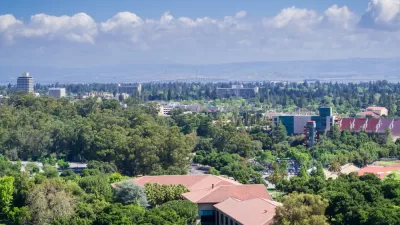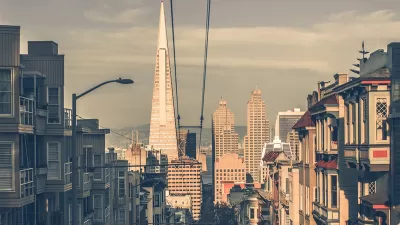Palo Alto is where Silicon Valley started, yet locals eagerly pick up the Daily Post, the Daily News, as well as read PaloAlto-Online. The New York Times investigates why print media flourishes here while regional and national papers struggle.
It's anything but hi-tech, just old-fashioned newspaper print. While their regional counterparts both lose readers and raise subscription costs, two near-daily papers compete head-to-head at a price that's hard to pass-up - they're free, and one doesn't even post its news on-line. The NYT technology journalist takes a break from reporting on the likes of Google and Yahoo and investigates why folks are reading newsprint.
"At a time when many cities struggle to support one newspaper, Palo Alto has three: The Daily Post, The Daily News, which began publishing in 1995, and The Palo Alto Weekly, which has a daily online edition and has been around since 1979.
"It is phenomenal to go into a coffee shop in the morning and see people reading local newspapers," said Ted Glasser, a professor of communications at Stanford. "These are manageable newspapers. You can read them in 15 or 20 minutes."
Still, all three newspapers say that they are profitable and that they are here to stay.
There are many reasons Palo Alto enjoys such a relative wealth of news coverage. It is affluent and has a highly educated, civically engaged population. Its pricey real-estate market and other high-end businesses provide a relatively strong advertising base, even during a recession."
Thanks to David Price
FULL STORY: In a Country of Monopoly Newspapers, Palo Alto Is Awash in Competition

Planetizen Federal Action Tracker
A weekly monitor of how Trump’s orders and actions are impacting planners and planning in America.

Map: Where Senate Republicans Want to Sell Your Public Lands
For public land advocates, the Senate Republicans’ proposal to sell millions of acres of public land in the West is “the biggest fight of their careers.”

Restaurant Patios Were a Pandemic Win — Why Were They so Hard to Keep?
Social distancing requirements and changes in travel patterns prompted cities to pilot new uses for street and sidewalk space. Then it got complicated.

San Francisco Suspends Traffic Calming Amidst Record Deaths
Citing “a challenging fiscal landscape,” the city will cease the program on the heels of 42 traffic deaths, including 24 pedestrians.

California Homeless Arrests, Citations Spike After Ruling
An investigation reveals that anti-homeless actions increased up to 500% after Grants Pass v. Johnson — even in cities claiming no policy change.

Albuquerque Route 66 Motels Become Affordable Housing
A $4 million city fund is incentivizing developers to breathe new life into derelict midcentury motels.
Urban Design for Planners 1: Software Tools
This six-course series explores essential urban design concepts using open source software and equips planners with the tools they need to participate fully in the urban design process.
Planning for Universal Design
Learn the tools for implementing Universal Design in planning regulations.
Heyer Gruel & Associates PA
JM Goldson LLC
Custer County Colorado
City of Camden Redevelopment Agency
City of Astoria
Transportation Research & Education Center (TREC) at Portland State University
Camden Redevelopment Agency
City of Claremont
Municipality of Princeton (NJ)





























